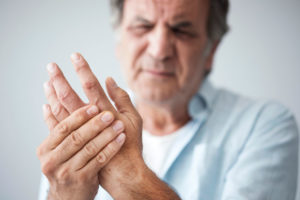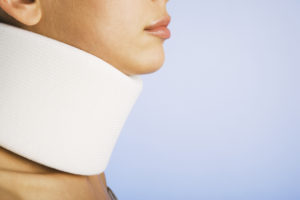Headaches are more than an inconvenience; they can be debilitating and significantly impact daily life. In Royal Palm Beach, finding effective treatments is crucial for regaining control over your life. The good news is that there are various approaches to managing and treating headaches, offering hope for a pain-free future.
In this blog, we will explore various headache treatments available to help you find relief and improve your quality of life.
Understanding the Prevalence and Impact of Headaches
Headaches are one of the most common complaints among patients. Whether it is a mild tension headache or a severe migraine, these painful episodes disrupt work, family time, and social activities. According to the World Health Organization (WHO), headaches are the third leading cause of disability worldwide. They are believed to affect an estimated 40% of the population globally. This high prevalence underscores the need for effective treatment strategies.
Migraines, in particular, can be incredibly disruptive. For many, migraines are not just occasional annoyances but chronic conditions that require ongoing management.
Different Types of Headaches and Their Symptoms
A headache is a pain in the head or face. It is often described as pressure that can be constant, throbbing, sharp, or dull. Headaches vary significantly in severity, pain type, location, and frequency. Understanding the type of headache you ‘are experiencing is the first step toward effective treatment. The following are the most common types of headaches, each with unique symptoms and triggers.
Tension Headaches
Tension headaches are the most common type. They often feel like a tight band around the head and are usually caused by stress, poor posture, or muscle strain. Symptoms include a dull, aching pain and tenderness in the scalp, neck, and shoulders.
Migraines
The Cleveland Clinic states that an estimated 12% of people in the United States experience migraines. Migraines are more intense than headaches and often accompanied by throbbing pain on one side of the head. Other visual symptoms, like seeing dots, zigzags, or sparks in your vision typically occur with migraines. Additional symptoms can include nausea, vomiting, and sensitivity to light, motion, and sound. Triggers vary but often include hormonal changes, certain medications, and stress.
Cluster Headaches
Cluster headaches are rare but extremely painful. They occur in cyclical patterns (clusters) and are characterized by severe pain, usually around one eye. Other symptoms include eye redness, tearing, and nasal congestion.
Recognizing these types can help you and your healthcare provider develop a targeted treatment plan.
Traditional Headache Treatments and Their Limitations
Traditional treatments often involve over-the-counter pain relievers like ibuprofen or acetaminophen. While these can be effective for mild headaches, they often fall short in managing more severe or chronic conditions. Also, using these medications too often could lead to long-term, more frequent headaches.
Prescription medications are available for migraines and other severe headaches. These include triptans, which specifically target migraine symptoms and preventive medications that reduce the frequency and severity of attacks. However, these medications can have side effects and are not always suitable for long-term use.
Relying solely on medication may not address the underlying causes of headaches. That is why it is important to see your healthcare provider if you are experiencing frequent or chronic headache symptoms.
Diagnosis for Headaches
Your provider will evaluate your personal and family medical history, discuss your headache symptoms and lifestyle, and carry out a physical exam. In some instances, they may recommend further testing, such as imaging tests, to help determine if your headaches are connected to an issue with your central nervous system. This helps the provider to develop a comprehensive treatment plan to manage your symptoms effectively.
Exploring Effective Headache Treatments
For those looking for comprehensive headache relief, a combination of approaches often yields the best results.
Holistic Approaches
Holistic treatments focus on the entire person rather than just the symptoms. Your healthcare provider will work with you to develop ways to help prevent your headache symptoms, such as avoiding the triggers that cause your symptoms. This may include adjustments to medications, lifestyle changes, or practicing relaxation techniques, such as acupuncture, massage therapy, and chiropractic care.
These methods have shown promise in reducing headache frequency and intensity in some people. They aim to relieve tension, improve blood flow, and promote overall well-being.
Non-Invasive Treatments
Non-invasive treatments, such as biofeedback and cognitive-behavioral therapy (CBT), can also be effective. Biofeedback helps patients gain control over physiological functions that can trigger headaches, while CBT addresses the mental and emotional aspects of pain management.
Innovative Solutions
Innovative treatments, including the use of medical devices like transcutaneous electrical nerve stimulation (TENS) units and wearable migraine relief devices, are gaining popularity. These devices offer pain relief without needing medication and can be used at home.
Practical Tips for Managing and Preventing Headaches
In addition to professional treatment, there are several practical steps you can take to manage and prevent headaches in daily life:
Maintain a Healthy Lifestyle
Regular exercise, a balanced diet, and adequate sleep are crucial for overall health and can help reduce headache frequency. Also, stay hydrated and avoid triggers, such as caffeine and processed foods.
Stress Management
Stress is a common trigger for headaches. Techniques such as yoga, deep breathing exercises, and mindfulness can help manage stress levels. Prioritizing relaxation and self-care is essential for preventing tension headaches.
Monitor Your Headaches
Keeping a headache diary can help identify triggers and patterns. Note the time, duration, and intensity of your headaches, along with any potential triggers. This information can be invaluable for your healthcare provider in developing an effective treatment plan.
How Advanced Medical in Royal Palm Beach Can Help
At Advanced Medical in Wellington and Royal Palm Beach, Florida, we specialize in providing comprehensive care for headache sufferers. Our team, led by Dr. Ishan Gunawardene and family nurse practitioner Shariffa Gunawardene, offers a range of treatment options tailored to your needs.
Personalized Treatment Plans
We believe in personalized care. Our team takes the time to understand your symptoms, triggers, and lifestyle to develop a treatment plan that works for you. This may include a combination of medication, lifestyle changes, and holistic therapies.
On-Site Services
For your convenience, we offer many on-site services, including blood draws, and when necessary, CT scans and MRIs can be performed within our multispecialty building. These diagnostic tools help us identify any underlying conditions contributing to your headaches.
Expert Care and Compassion
We understand the importance of family health. We provide compassionate care and are committed to helping you achieve a better quality of life through effective headache management.
For more information or to schedule a consultation, call us today at (561) 434-1935 or use our appointment request form. We look forward to serving you!









